Validating data quality from image-based tagging and recapture submissions can improve lobster stock assessment in the Gulf of Maine and Georges Bank
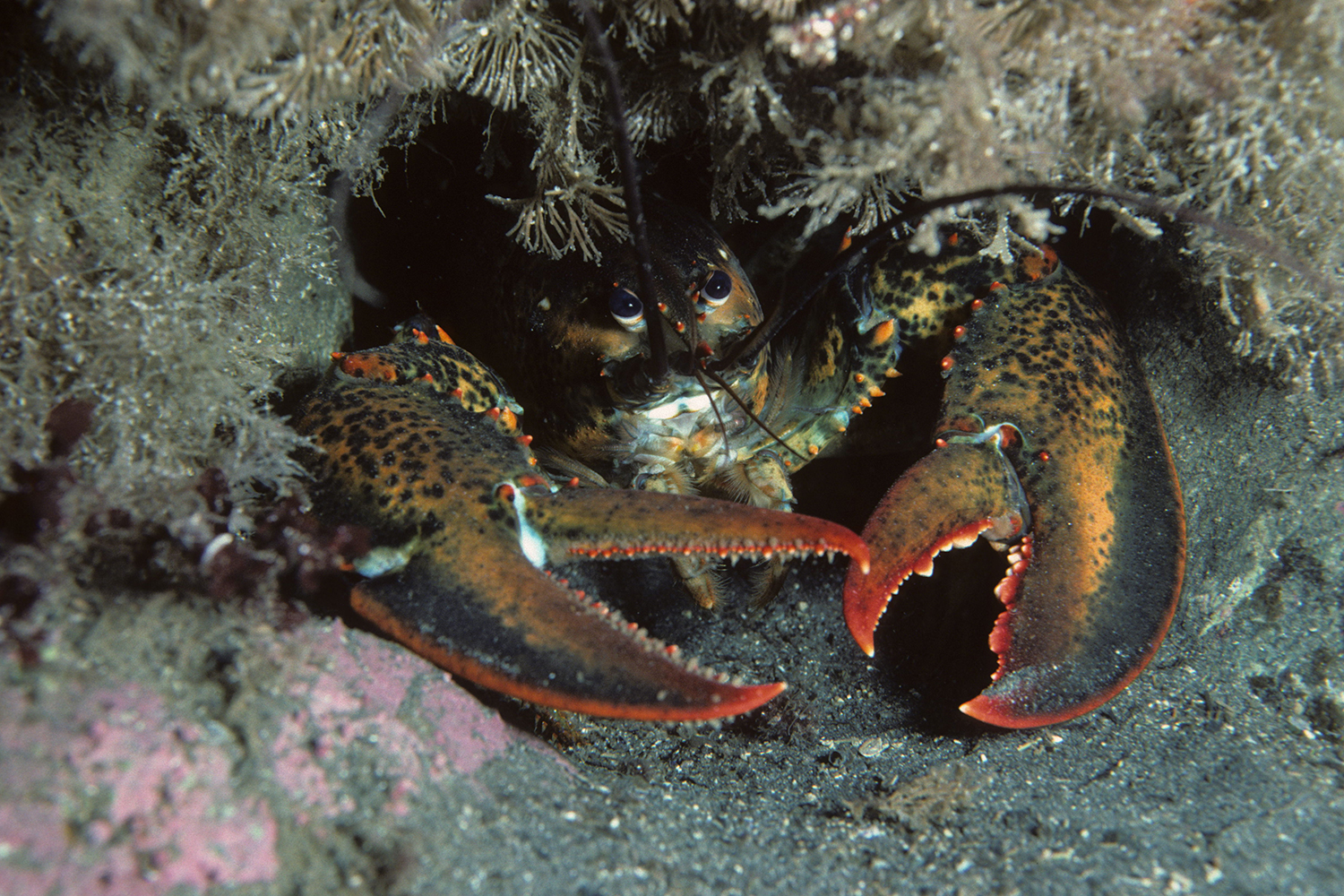
Determining how individuals grow is a necessary aspect of size-structured fishery management decision models. For many commercially or recreationally targeted species, growth can be estimated by sampling a population and determining the size and age structure using samples and measurements of annually accreting tissues like otoliths. These data can be used to subsequently estimate a growth function relative to the age of an individual.
However, estimating the age of individuals and a subsequent growth curve is difficult when working with crustaceans, which shed all external hard tissues during molting, and the limitations and uncertainty severely limit its use in fisheries management applications. Rather than estimating growth using traditional methods, the Atlantic States Marine Fisheries Commission American (ASMFC) Lobster Stock Assessment applies growth as a discontinuous probabilistic pattern, which is more appropriate for a molting crustacean. The assessment uses estimates of molt increment and interval from observations of individuals over time to develop a growth transition matrix (GTM) that describes the probability of a lobster entering successive size classes.
Tagging studies are an inexpensive method to collect data on the size of individual lobsters over time that can be used to calculate carapace length changes while also engaging fishermen in the process. Lobster tagging studies historically rely on fishermen and observer measurements made with industry-standard gauges or calipers. However, previous studies in other species have found ImageJ – an open-source software for processing and analyzing scientific images – length estimations to be consistent with measurements while successfully reducing the time spent on data collection. These methods require calibration for each new species or region to ensure data quality before incorporation into stock assessment.
This article – summarized from the original publication (Rzeszowski, E.J. et al. 2024. Building confidence: Developing image-based methods to incorporate fishery-collected data in the American lobster stock assessment. Fisheries Research Volume 276, August 2024, 107055) – reports on a study to improve stock assessment of American lobsters in the Gulf of Maine and Georges Bank.
Study setup
This research used data of tagged and recaptured lobsters released in the Gulf of Maine and Georges Bank regions between 2015 and 2020, where in addition to recapture locations, harvesters were encouraged to submit images of recaptured lobsters alongside a standard lobster gauge as a scale to estimate carapace length. Some fishermen were able to provide both direct measurements and images. Images were analyzed in ImageJ to estimate individual lobster carapace length (CL); and each image was assigned a quality score.
For all groups, image-derived lengths were correlated with measured observations, regardless of the overall image quality, with only a slight underestimation at the maximum end of CL. This image-based method for length estimation provides high-quality length predictions regardless of image quality and can significantly increase the likelihood of harvesters contributing data with broad potential to engage commercial fishermen in collaborative science. Using this method, we were able to expand the dataset of length records from this project by 33 percent, providing additional data at a rate similar to tagging an additional 6000 lobsters.
For detailed information on the experimental setup, lobster tagging and recapture, ImageJ length analysis, and estimates of measurement errors, refer to the original publication.
Results and discussion
The benefits of fisheries-engaged research are well documented and include expanded sample sizes, development of trust and buy-in between researchers and the fishing industry, and incorporation of fishermen’s knowledge into the research and management processes. Therefore, methods such as image collection that can increase fishery participation in research are crucial for fisheries management.
Regardless of image quality, lengths estimated using ImageJ were comparable to length measurements directly made using calipers. Importantly, the high rate of low-quality relative to high-quality images did not impact on the quality of results estimated by linear regression. Andrialovanirina et al. demonstrated that using photography and ImageJ analysis significantly decreased the average time spent processing each organism. With a well-calibrated model, we contend that mark-recapture using fishermen and a relatively simple and quick measurement process is a robust approach to significantly expand the database of growth rates, an important parameter for fisheries management models.
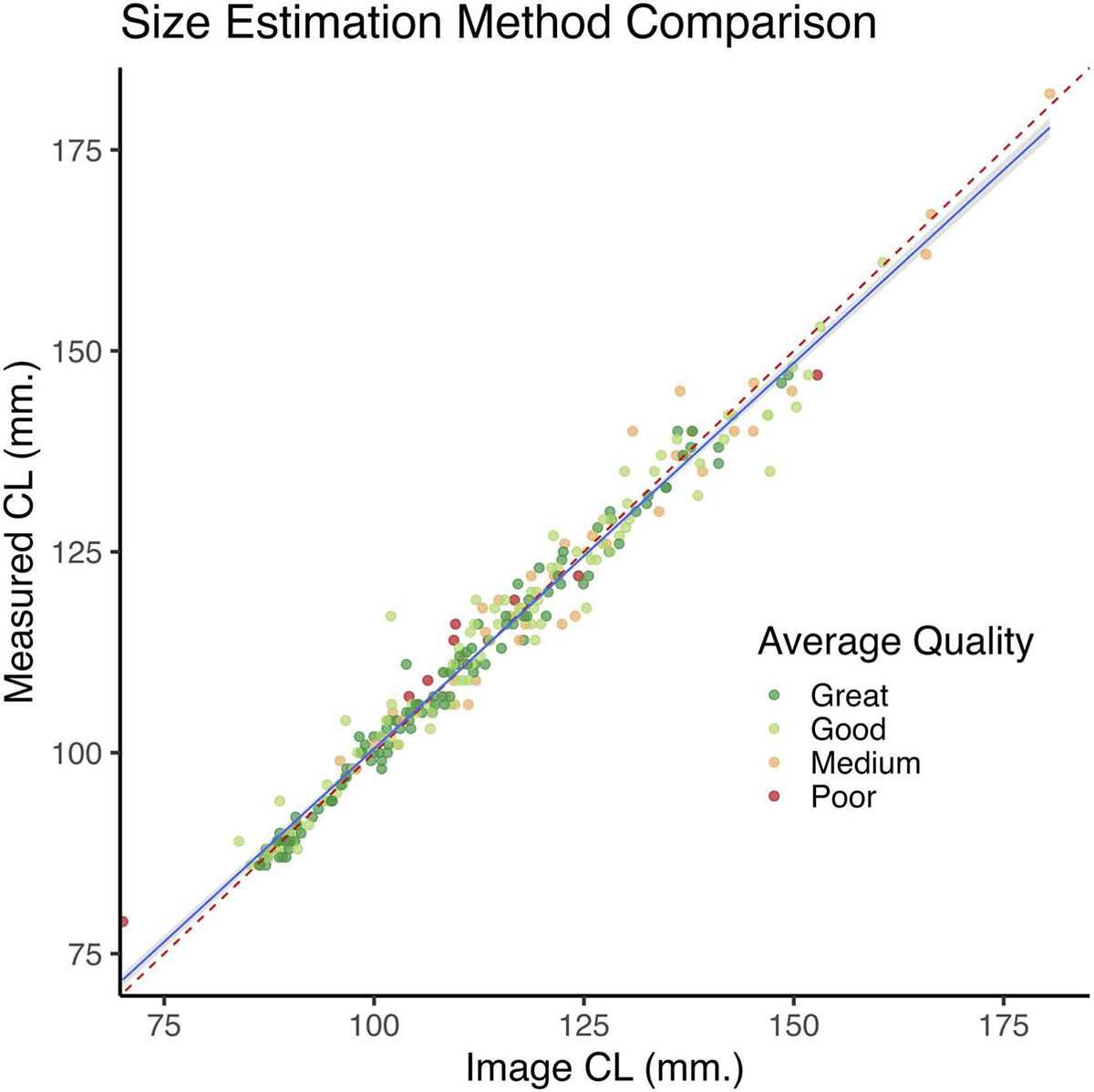
The rate of unreported tag recaptures varies between fisheries for a variety of reasons, including tag reporting incentive structures and compensation, cross-boundary fisheries, and fishery perception of management or research processes. The fewer the number of reported tags, the larger the probability that there is spatial or temporal bias in reporting and consequently, the parameters derived in the study. The lost time associated with data collection and communication during a busy fishing day may create a potential barrier to data collection. In this study, traditional methods of length estimation for crustaceans using calipers, which are not often present on a fishing vessel, would have otherwise presented a barrier to data collection.
Currently, almost all boats have at least one smartphone with a good-quality camera on board. Any reduction in the time and unique resources required to collect data will make data collection more accessible to fishermen constrained by their work environment. Thus, effectively engaging with a wider range of potential citizen scientist fishermen resulted in a higher rate of tag recaptures with complete data.
As both the Gulf of Maine-Georges Bank and Southern New England stocks experience shifting temperature regimes, updating the GTM has been highlighted as a research priority in recent ASMFC Stock Assessments to maintain biological relevancy under changing environmental regimes. Gulf Stream water intrusions into the Gulf of Maine have resulted in increasingly frequent warm bottom water anomaly events in recent years. As lobster growth increment and frequency are directly related to the ambient temperature experienced between molting events, understanding how this new temperature regime may be affecting growth could better refine our estimates of resource abundance and annual recruitment into the fishery.
By encouraging image-based submission of recapture data, the amount of recapture reporting can be supplemented, as seen here, to result in increasingly refined management decisions. Validating the image-derived lengths allowed us to increase the new, usable length change data collected by this study by 33 percent which will provide additional refinement to estimates of both GTM parameters across size bins. It should be noted that in addition to improving biologic parameter estimates, increased data yield increased the efficiency of the already traditionally low-cost tagging study. ImageJ-derived lengths supplemented the data by a third, which provided additional data at a rate similar to tagging an additional 6,000 lobsters.
Growth in lobsters is stepwise through molting, and the level of precision necessary for an accurate assessment may be lower than required for a continuously growing organism or an assessment that does not bin individuals by size. We found that using a reference object of a known length is a necessary step for ImageJ length estimation, but the addition of stabilization platforms and paired stereo lenses was unnecessary to achieve standard errors within < 2 percent of the observations. Despite the expanded error relative to some ImageJ applications, analysis of variance (ANOVA) results showed that the model estimates were not impacted by image quality (Fig. 2).
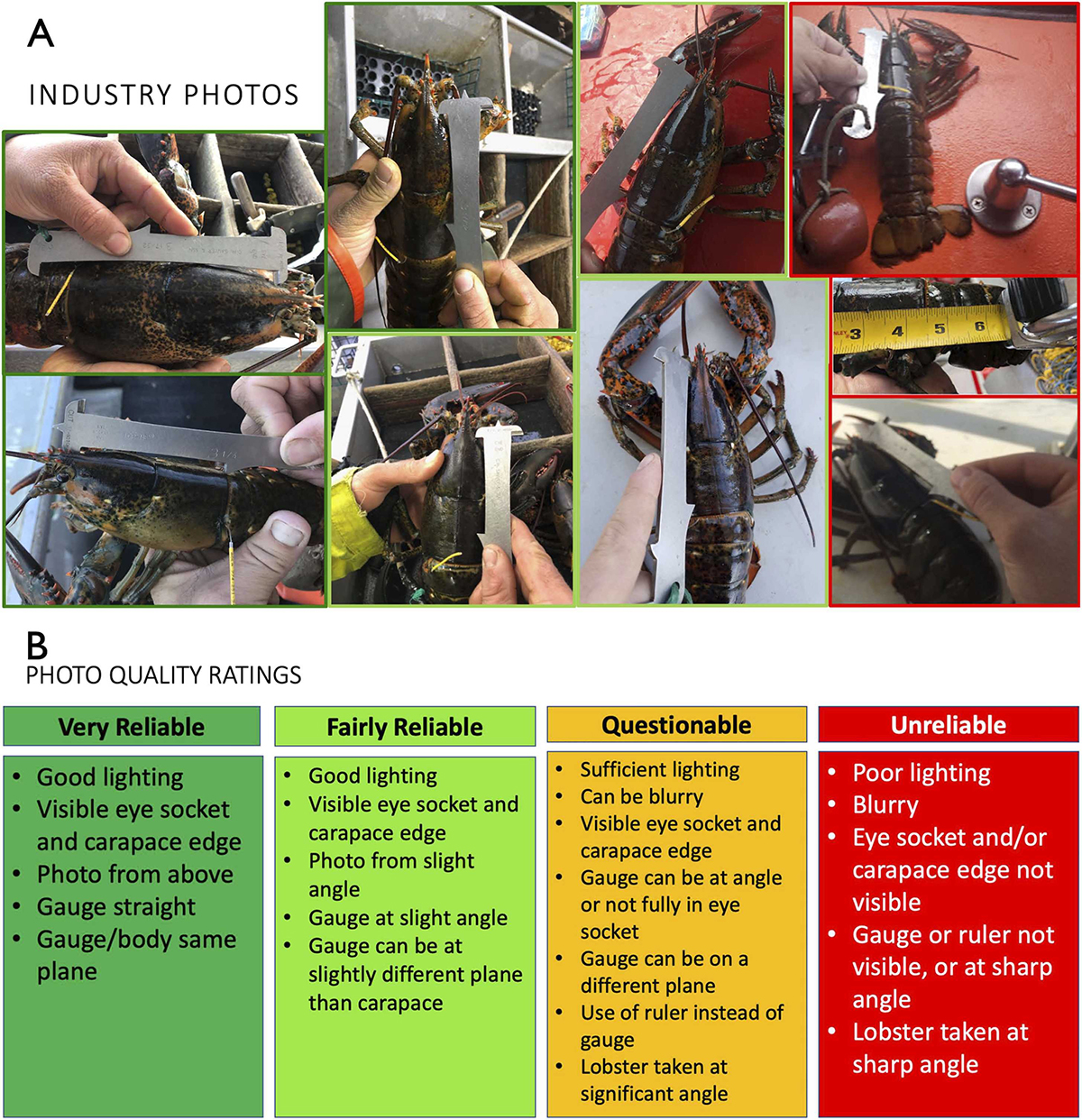
We do not expect the maximum level of precision to be achieved on commercial fishing vessels without disrupting the work environment, but by binning lobsters in 5 mm size bins the ASMFC Stock Assessment GTMs do not require high-resolution methods to estimate parameters. Though the linear model residuals representing measurement error on ImageJ-derived lengths have a wider distribution than observed compound error associated with two measurements (Fig. 3); this can be adjusted for by associating different error structures with various methods of length data collection.
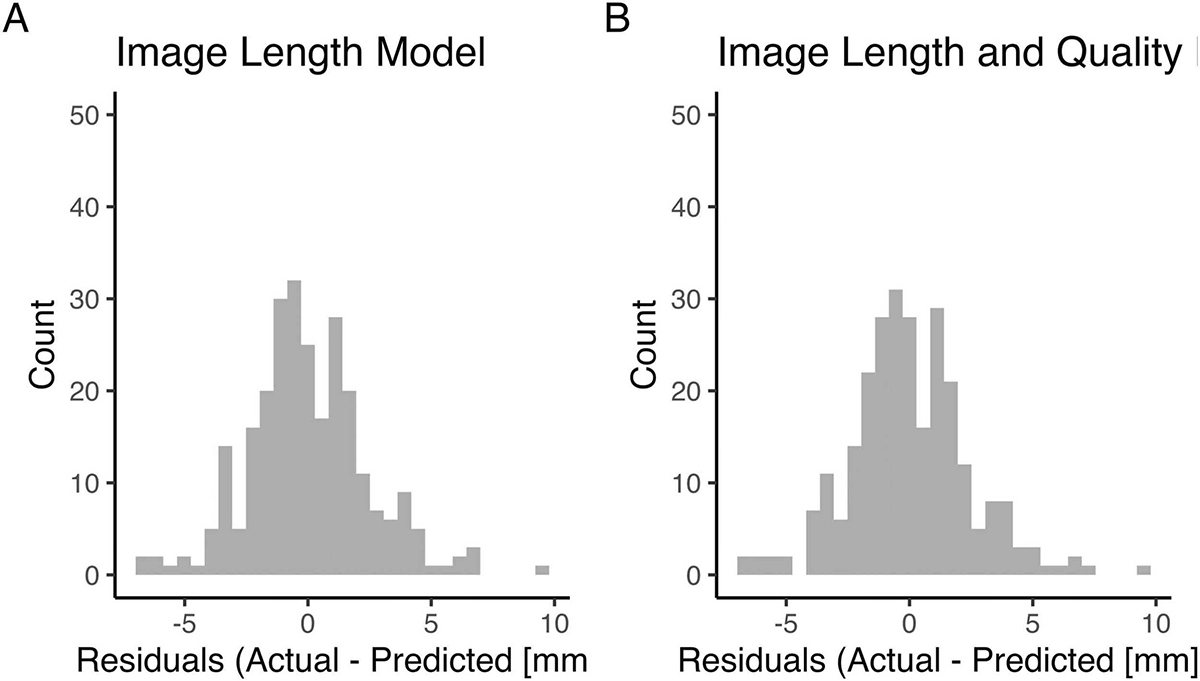
While the standard error for the image-derived length may be slightly larger, this additional variability can be subsumed in a 5 mm size bin for most observations. This means the error introduced by the image-based method would not typically impact the size bin that an individual lobster is assigned to. The inclusion of a separate error structure for image-derived lengths may marginally increase GTM complexity but is expected to improve the accuracy of growth parameter estimates by increasing the sample size and significantly reduce the barrier of entry for more fishermen thereby reducing potential bias in reporting.
Perspectives
Simplified image-based methods for length estimation can significantly increase the likelihood of industry contributing to data collection by reducing unique materials and processes required onboard fishing vessels. The method improves the accessibility of data collection by allowing any fisherman with a cellphone camera to efficiently and effectively collect high-quality-length data. Allowing cellphone image-based methods as an option for data reporting in future studies is expected to increase the total data collected, as demonstrated by this study, while reducing the time spent collecting each data point aboard fishing vessels.
Additionally, validating the quality of data from image-based recapture submissions allowed us to collect more growth data, improving the stock assessment and providing a tool to engage more fishermen. When fishermen are engaged in science, there tends to be increased trust in the results. Improved relationships are expected to bring additional benefits to the research community by improving the quality of data received from fisheries, creating data products that are increasingly useful for management, and providing new opportunities to include fishery knowledge in research.
By ground-truthing ImageJ-derived measurements with direct measured length reports, and observing high-quality length predictions regardless of image quality, we have provided evidence that this is a viable method for collecting data for use in stock assessment. We reported a slight increase in standard error when estimating length from images rather than direct measurement; however, the level of precision remained within an acceptable range for inclusion in the ASMFC Lobster Stock Assessment process. Questions of precision will ultimately be specific to the application for which lengths are being collected.
Now that you've reached the end of the article ...
… please consider supporting GSA’s mission to advance responsible seafood practices through education, advocacy and third-party assurances. The Advocate aims to document the evolution of responsible seafood practices and share the expansive knowledge of our vast network of contributors.
By becoming a Global Seafood Alliance member, you’re ensuring that all of the pre-competitive work we do through member benefits, resources and events can continue. Individual membership costs just $50 a year.
Not a GSA member? Join us.
Author
-
Everett J. Rzeszowski
Corresponding author
Darling Marine Center, University of Maine, Walpole, ME, United States
Related Posts
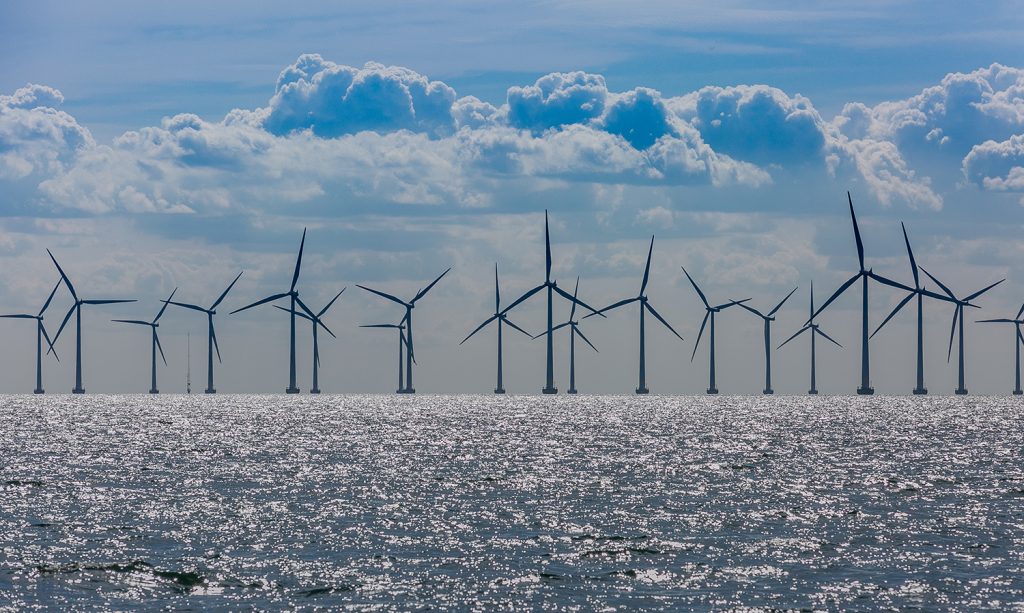
Intelligence
‘No one knows what the risks are,’ say New England fishermen about pending offshore wind farm project
The New England fishing industry is worried that the approval process for a massive offshore wind farm off the coast of Rhode Island is moving too fast.
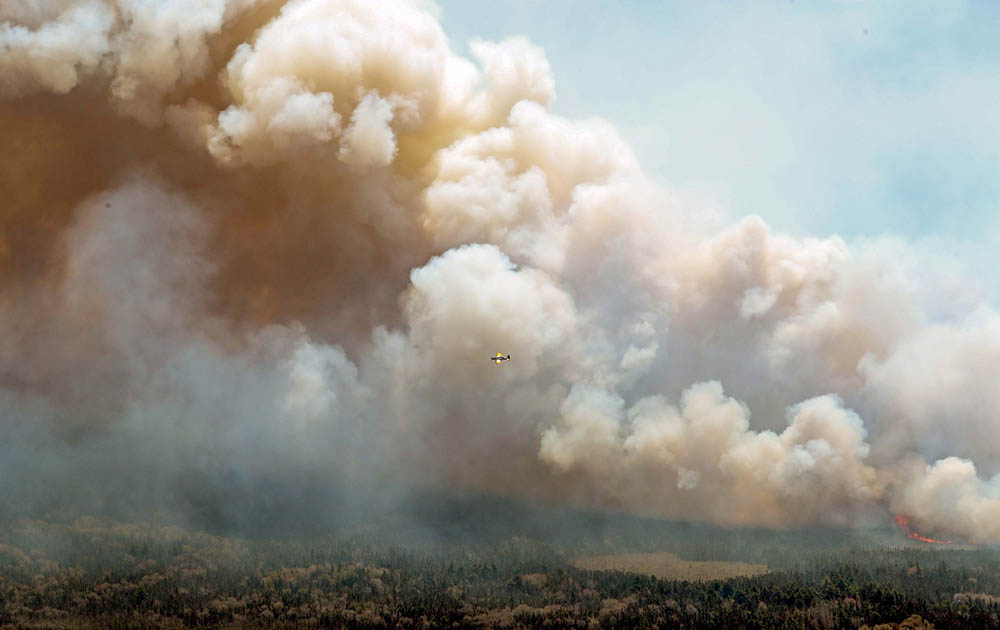
Intelligence
As ‘unprecedented’ wildfires burn across Canada, Nova Scotia seafood sector feels the heat
With wildfires raging across Canada, Nova Scotia's seafood industry faces lobster fishing, aquaculture and supply chain disruptions.
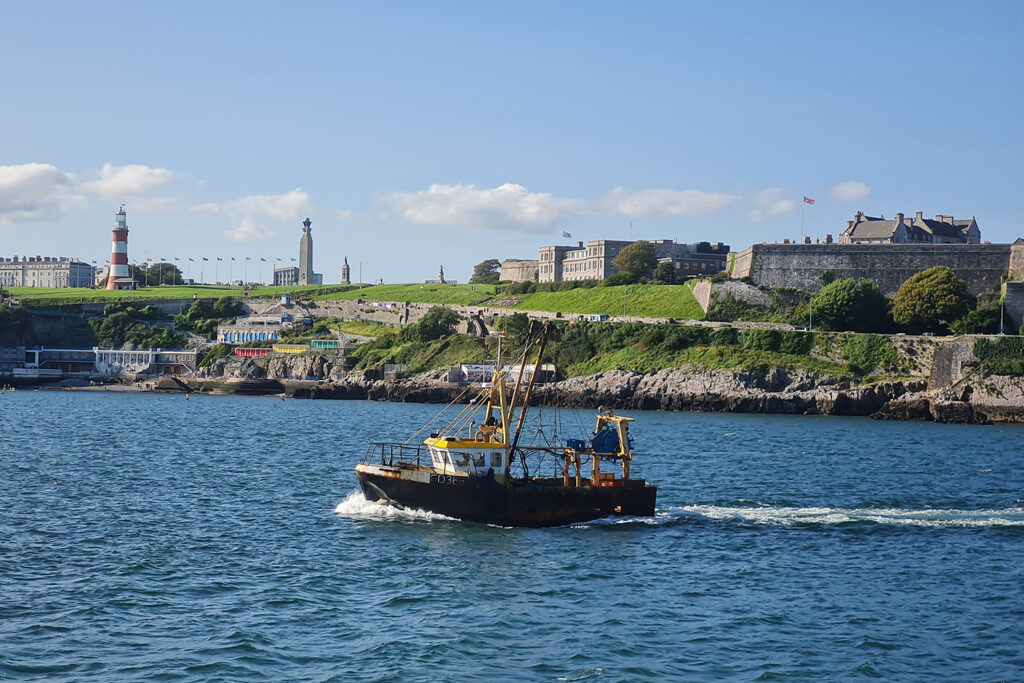
Fisheries
Building trust: How researchers are charting the post-Brexit course for more sustainable fisheries in the UK
Brexit offers the UK a chance to tailor fisheries policies, but trust is key to achieving sustainable fisheries and effective governance.
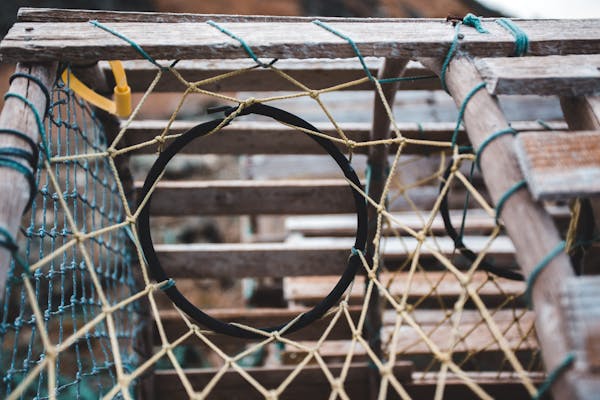
Fisheries
DFO and First Nations to pool data to inform commercial lobster fishing decisions in Gaspé
Collected data will be used to assess if stocks in Gaspé can support more commercial lobster fishing while ensuring conservation.



